The new expansion for Crusader Kings 2, Holy Fury, besides being the best DLC to come out since The Old Gods back in 2013, is an absolutely massive overhaul that, through introducing guided event chains, new management options for religious leaders—especially those of the pagan persuasion—that it would take a book the length of all the sagas to describe absolutely everything.
So instead of trying to cover the whole DLC in one shot, let’s focus in on the one mechanic that is absolutely the most literally world-changing one in the whole package: the Shattered World rules.
Let’s start by making like a god and creating a world.
One Caveat!
Shattered and Random Worlds will not allow you to circumvent DLC restrictions that lock playable pagans behind the Old Gods DLC, Muslims behind Sword of Islam, and nomads behind Horse Lords, for example. Please bear this in mind if you’re shattering the world (especially if you’re randomizing the religions in the game) since you might just end up with nothing but unplayable factions all over the map.
Put simply, this game mode richly rewards the completionist above all. Luckily, these DLCs go on sale a lot. I have almost all of them myself (even bought The Reaper’s Due just because it was there when I got back into the game recently), and I’ll be writing with that assumption in mind. If you can’t use something I suggest here, and you really want it, buy the DLC. You’ll be generally glad you did.
Shattered Vs. Random
The biggest difference between a shattered world and a random one is the scope and scale of the duchies and empires that start the game. That is to say, simply generating a random world means you can make it a lot like the base game, only… different.
Three of the first four settings are for “number of dukes”, “number of kings”, and “number of emperors”, after all. The point here isn’t necessarily to change the fundamental flavor of a traditional CK2 game, where vassals can break free of lieges or scheme to gain the crown for themselves and where one-province minors are limited to places like Ireland if they want to grow powerful extremely early in the game.
Sure, you can turn all of those settings way down or even off, but if you’re going to do that, that’s where the fourth setting, the one at the very top, comes in. You can assign a maximum number of counties for counts to own.
Put that number at 8 and the game will tend to generate multi-county realms more or less exactly at the maximum demesne size that the rulers of those counties can hold.
Put it down at 1 and every count starts as a one-province minor.
In-between, of course, generates results that lead to decent-sized realms to start. This is nice if you don’t want to twiddle your thumbs before you start warmongering; you can pick a county that’s a bit bigger than its neighbors and get to putting together those de jure duchies and kingdoms that allow you to play “the Irish strategy” anywhere on the map.
Shattered World, meanwhile, is a lot more balanced.
Set it to “counties only” (the setting on the left at the top of the menu) and everyone’s a one-province minor.
Set it to “duchies only” (the setting on the right) and every duke will start with their own complete de jure realm, ready to start vying for power to see which of those petty warlords will become the king (this is absolutely ideal for a “Bretwalda”-like game in the British Isles.)
Set it in the middle and there will be dukes with count vassals, a bit more of a headache rulership-wise but which does tend to slow down the pace of advancing “blobs” ever so slightly.
If all you did was use these options to break up an early start, it would be a fine way to go about it. But there is so much more available to you, so let’s dig deeper.
Let’s start with the three game settings unique to the Shattered World.
How Fast Do You Like Your Blobs?
The “Consolidation” casus belli, available for a designated amount of time from the start of the game, essentially opens the “Become King of Norway” decision from Norse pagans up to the entire game world.
During that limited time, you’ll have an all-you-can-eat right to use the “county conquest” casus belli when starting a war. This has the net effect of saving you a lot of time and trouble as a non-Germanic-pagan faction in getting rid of a pesky neighbor, since you won’t have to fabricate any claims.
Settings include Disabled as well as Enabled for 25 years, 100 years, or Permanent. Permanent is… well, it’s way too powerful in the midgame and beyond for warmongers. Doing this for longer than a century makes the game an absolute cakewalk.
Beware the Fallen Empires
If you’ve played Paradox’s sister game Stellaris, you know what happens when the Awakened Empires and the event-generated conquerors start showing up to screw the galaxy with a light show of space lasers.
Well, put that on Earth (minus the space lasers) and you have the Great Conquerors, of which up to 12 can be designated. These will periodically spawn with large armies, a special Invasion casus belli, and a tendency to show up nowhere near the player so they can do the maximum amount of damage and consolidation before the player eventually has to fight them. This is the check on player power from all that free consolidation in the early game that a human can do.
The more of these you spawn in, the harder the game gets.
My Son, All This Shall Be Yours
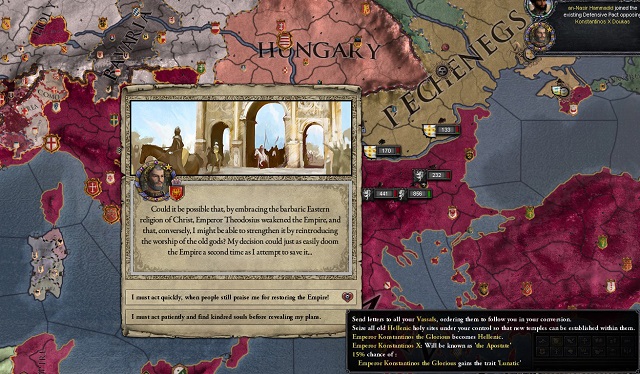
There’s an option to change the succession laws, but it’s either bugged or just doesn’t work with tribes. It’s hard to tell with Paradox what’s a bug and what’s a feature since their games are so complex, and I did my test playthrough for this guide as the County of Agder with a 769 historical start in a counties-only Shattered World. After 20 hours, I’ve only scratched the surface.
If indeed it’s a bug and Paradox meant to allow feudal succession for tribes, this massively curbs the frustration factor that is getting locked to Elective Gavelkind until you can warmonger enough Moral Authority and religious holy sites to reform your religion and adopt feudalism or merchant republics.
Setting Primogeniture early is a huge buff to unreformed pagans, nomads, and tribals.
Demographics Or: How To Game Over In Year One
The next group of settings: Female Ruler Percentage, Marriage Percentage, Age Span, and Number of Children (0-10), are all self-explanatory.
The temptation is to go hog wild here, but it is real easy to accidentally trigger a game over when you make a world full of small dynasties ruled by women and find you can’t keep your family line going past the first generation.
Granted, there are always ways around this (a matrilinear marriage to a lowborn courtier is every countess’s in-case-of-fire-break-glass option if you can live with the prestige hit, as is the Present Debutante option to magic a wife out of thin air for a male ruler.)
But do be careful with these sliders.
How Historical Do You Like Your History?
You can, in any kind of world, keep the cultures and religions as they are and where they are in the world. Norse stay in Norway and follow the Old Gods, Italians live in Italy and are Catholic, and so on.
You can also decide to randomize historical cultures so Norse people live in the deepest, darkest parts of sub-Saharan Africa if you like. The map does extend all the way to the Sahel region, from Mali in the west to Somalia in the east.
Or those same men of the north could find themselves on the western fringes of China! If you’ve got the Jade Dragon DLC, that means Vikings on the Silk Road getting chummy with the Cathay emperors in Nanjing, and the idea of a bearded, axe-wielding Genghis Khan in a helmet out of a Wagner opera? Sure, why not?
But if you really want to break your brain and make yourself feel like you’re playing in a world that is not our own, try randomizing the culture and religion names. Half the fun then becomes just trying to suss out what it is your neighbors believe so that you can try and formulate a strategy against it.
The Gods Must Be Crazy
And, of course, Paradox provided a cheat sheet. As soon as you randomize religions, a little green arrow lights up in the interface allowing you to look at and alter the belief systems of every religion in the game. You can’t do it with historical religions (Catholics are still Catholic, Germanic pagans still worship Odin and Thor, and whatnot), but anything goes with random religions.
Want to make the “Wienkeic Rites” (the version of Norse paganism the game whipped up for me when I pressed the button just now as I’m writing this guide) a peace-loving, non-aggressive religion rooted in meritocracy and stability? Go nuts!
Want to make historically Buddhist or Hindu lands fall under the sway of a warmongering religion with bloodthirsty gods and a faithful who believe that death in battle brings eternal rewards in the hereafter? Gandhi wants his nukes!
You can choose anything in between and modify the AI as well, giving you (pun fully intended) god-like powers over belief.
Imagine No Possessions, I Wonder If You Can
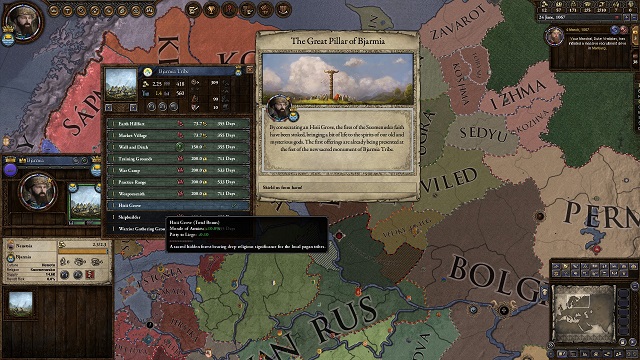
The next key piece in our world-building puzzle is how fleshed out (or not) the individual holdings are.
You can keep this historical, so counties that are rich in the base game will remain so, you can randomize it so you get an unequal world with obvious strategic targets, or you can ensure that every single province in the game gets the same number of holdings in it.
You can have as few as one available holding slot or as many as seven, assigned to every province, or as mentioned you can make it random. The choice is yours.
The next section of the menu, “Holding Types”, determines whether you have fully feudal holdings everywhere on the map, fully tribal ones, fully nomadic camps, or any mixing and matching to suit the flavor of your game.
Tribalism does tend to nerf looting for pagans pretty badly, but at the same time, tribal holdings are easier to conquer the old-fashioned way.
The next slider, technology, gives you three choices: Historical (tends to concentrate early game tech in traditional “civilized” centers of learning), Flat (everyone’s on the same footing, based mainly around the historical start year you choose for your game), and Random (although it won’t slide too far off the start year’s level of tech, advances will be randomly distributed rather than concentrated historically.)
I Dub Thee Emir of Groove-Funkistan
The last set of sliders relate to de jure duchies and kingdoms. Do you want the Kingdom of Arabia to be in… well… Arabia? Or would you rather have something much wackier?
Note that if you randomize the de jure realms, you can choose how big they are, and therefore how much conquering you’ll have to do before you can form one. Fewer is better if you don’t want to rely too heavily on vassals; more is better if you want a challenge of keeping a realm from disintegrating while you vie for the crown.
The same warning applies here as applies to religion. If you want to spend more time playing and less time sorting out the Tower of Babel story you just inflicted on the world by randomizing all the names, it might behoove you to change the flavor of the game mechanics without necessarily changing so much that the world is too foreign for you to understand while you’re already playing one of the most complex games this side of Dwarf Fortress.
But if you do become the Emir of Groove-Funkistan, don’t forget the burnoose.
Actually Playing This Weird World You’ve Built
At the end of the day? This is still Crusader Kings 2. Absolutely everything in the game functions according to the same rules (including the new rules the DLC adds that will present themselves over the course of your playthroughs, which we’ll cover elsewhere or which you can read about on the CK2 Wiki or the Paradox forums) as it always has.
The difference is that if you’ve just thrown yourself into a world of petty fiefdoms vying to become the emperor of the known world, you’re going to actually have to formulate a fresh strategy that may have nothing at all to do with how a “normal” person plays the game wherever it is you’ve spawned.
That, ultimately, is the most fun and challenging part of Shattered and Random Worlds. The history books all burned. It’s up to you to write a new one.


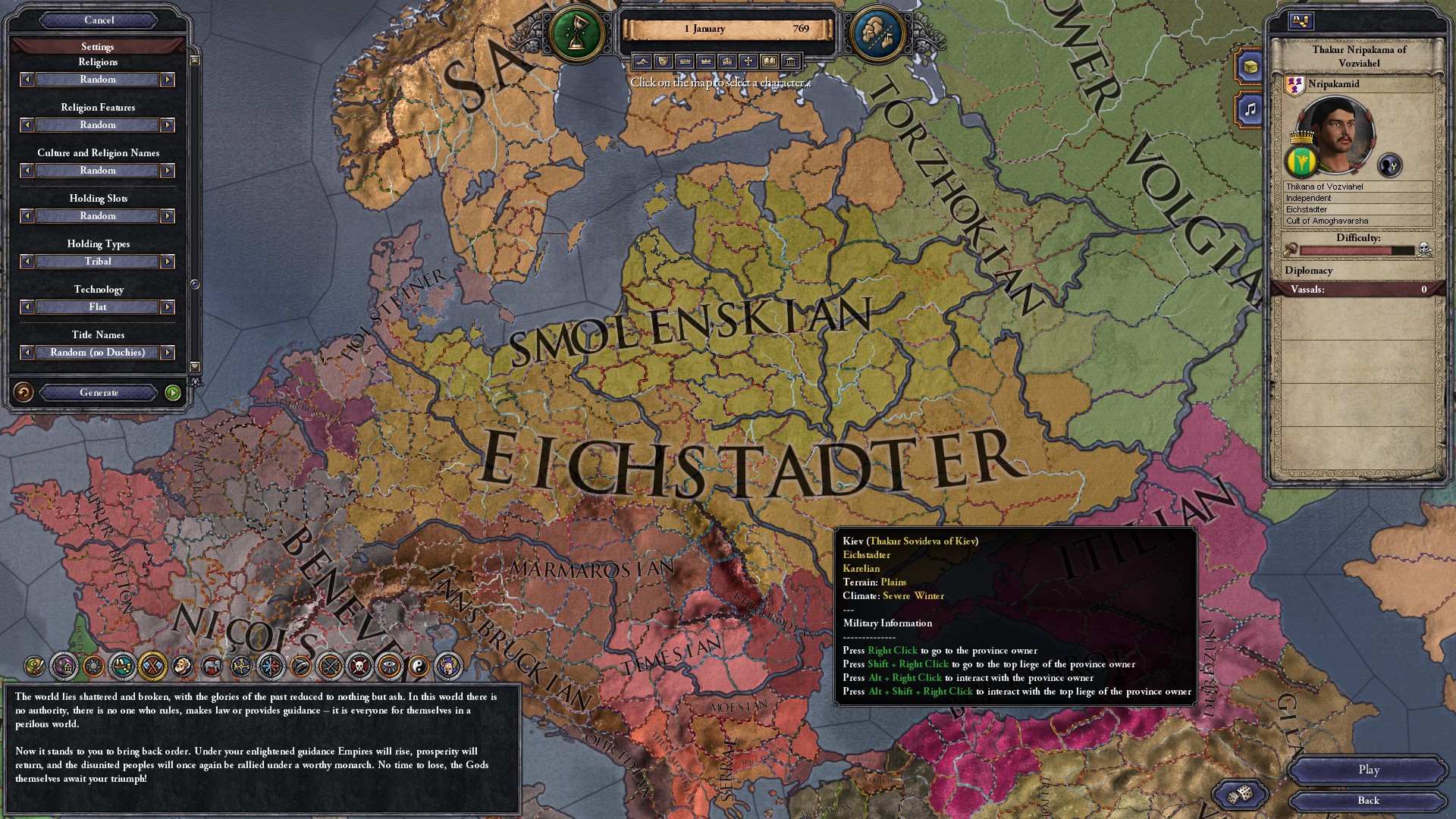
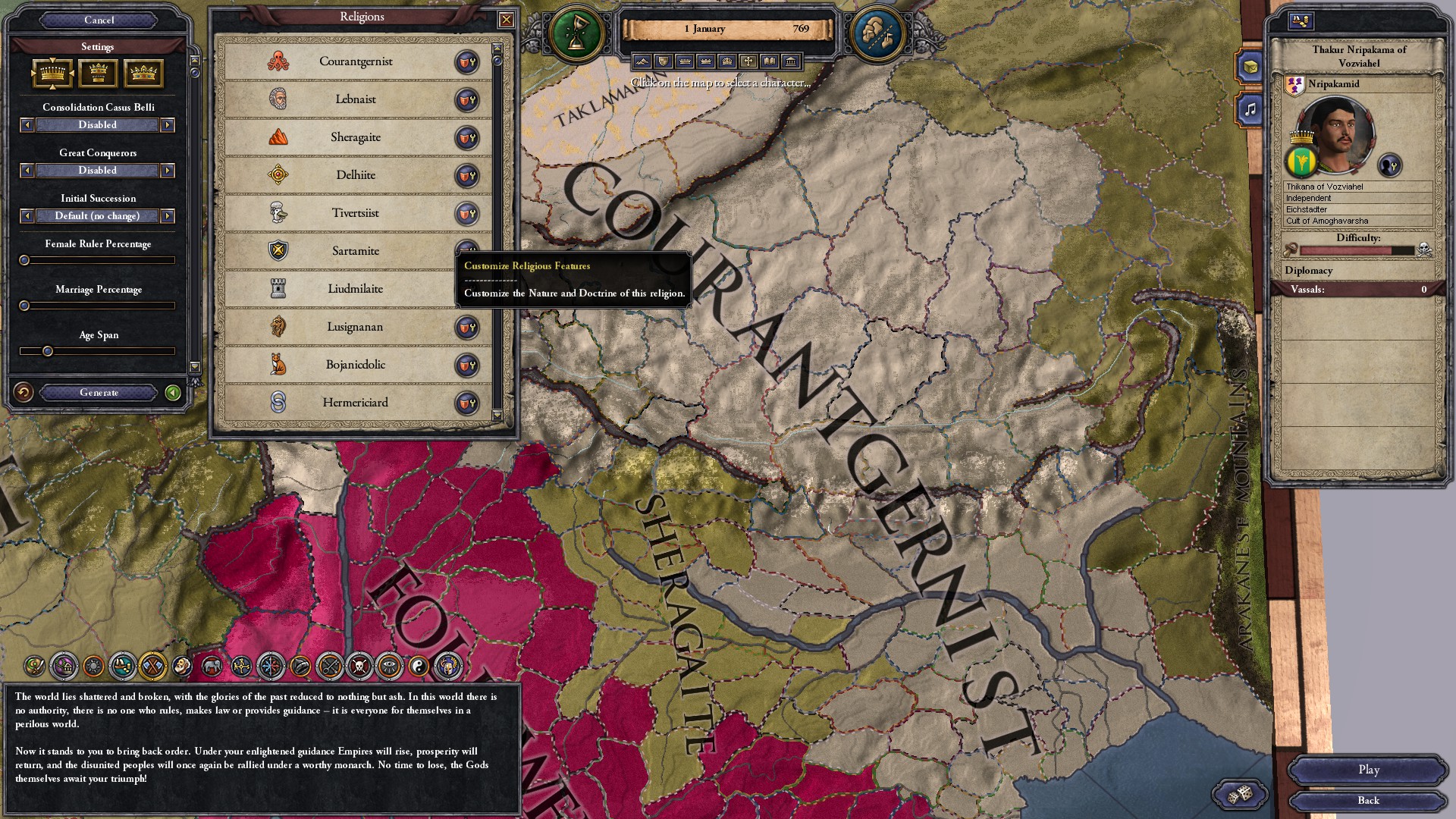
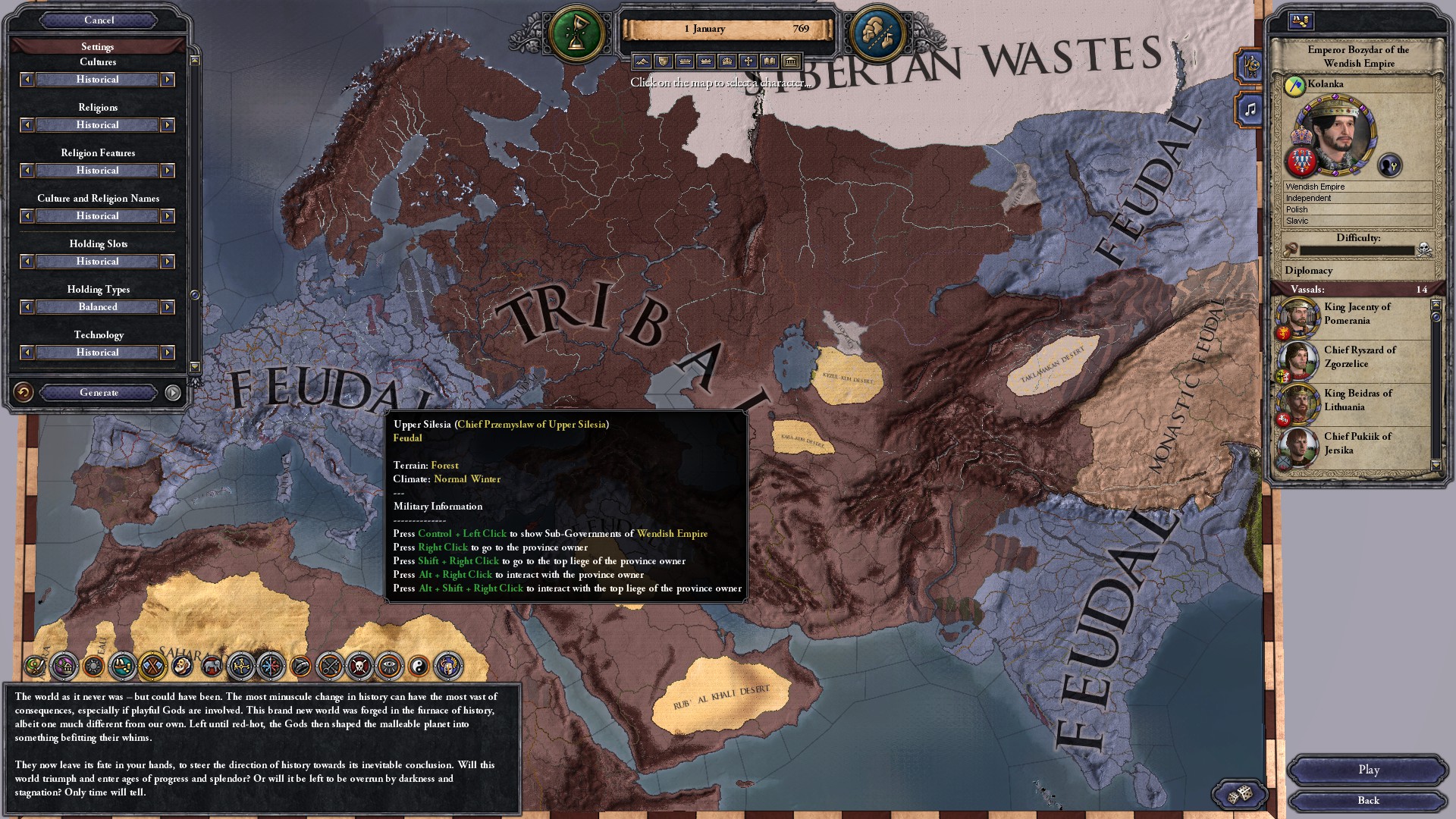



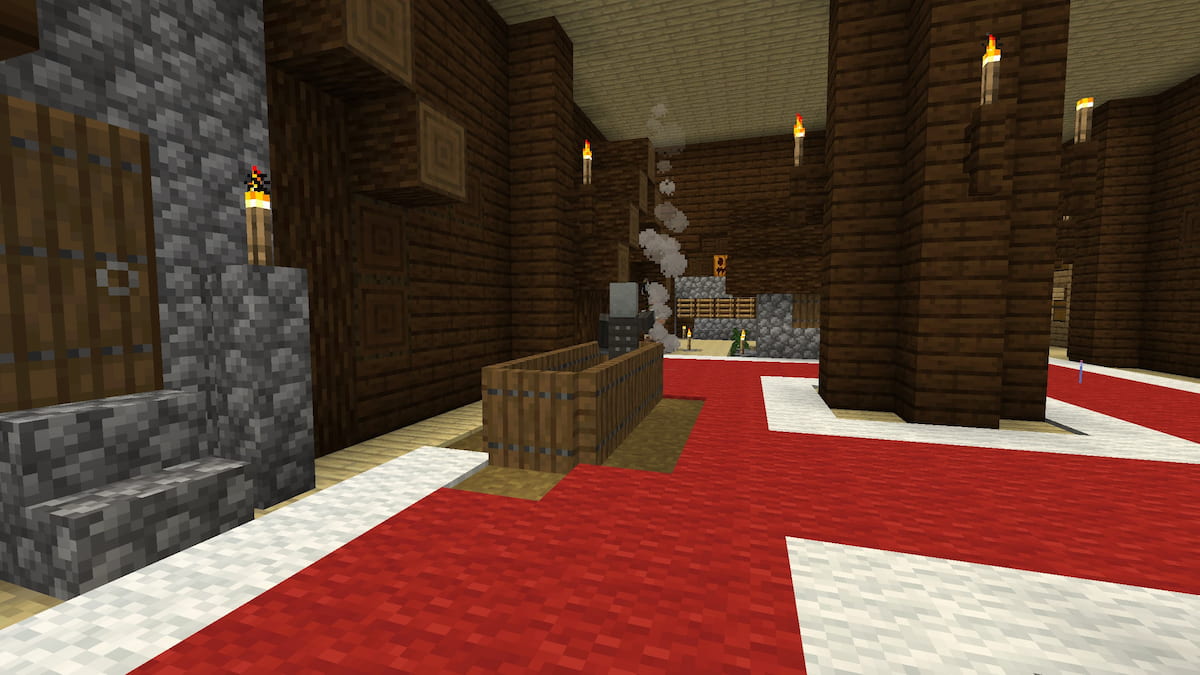
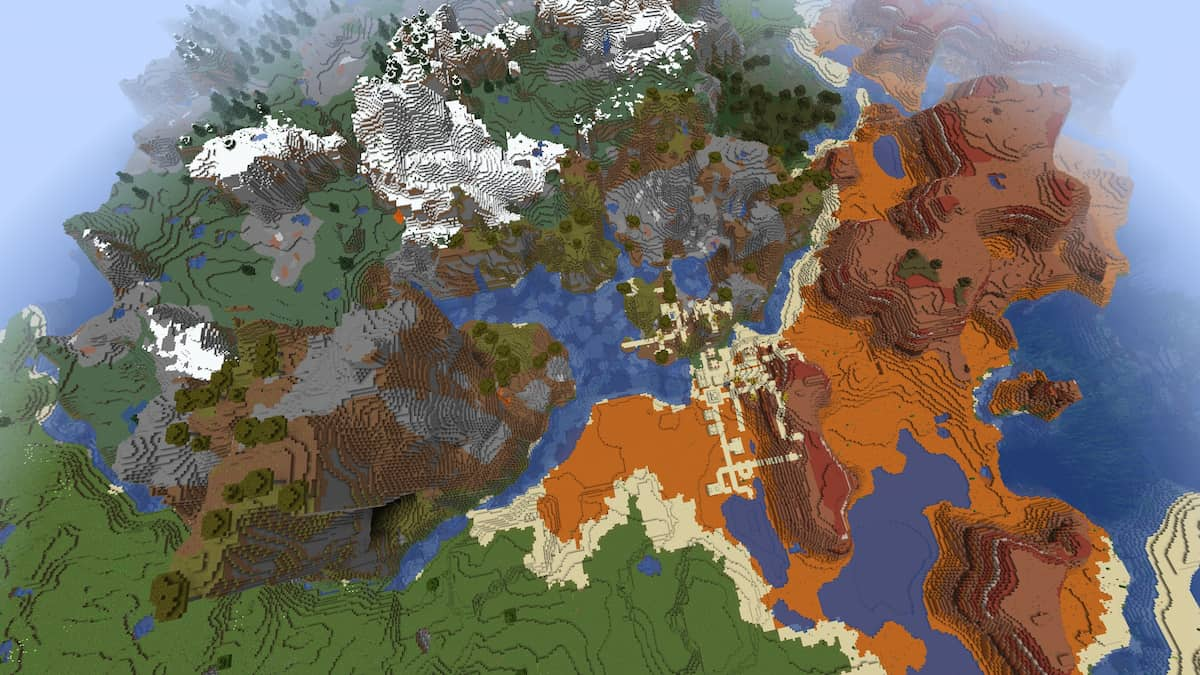
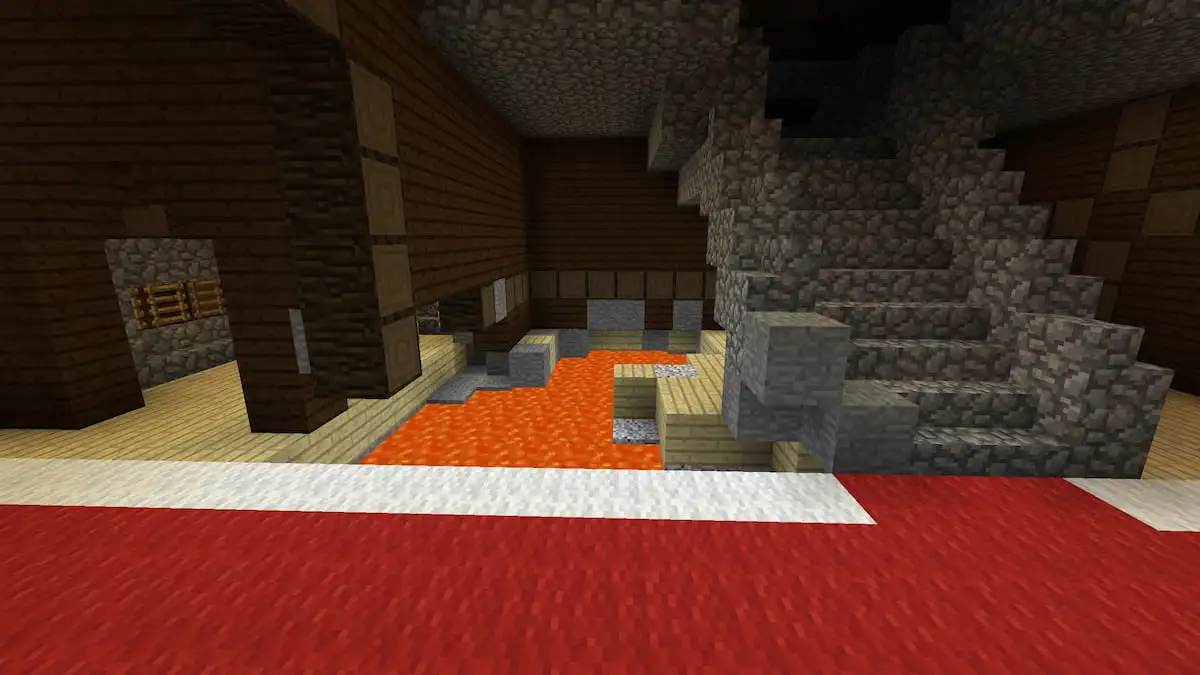
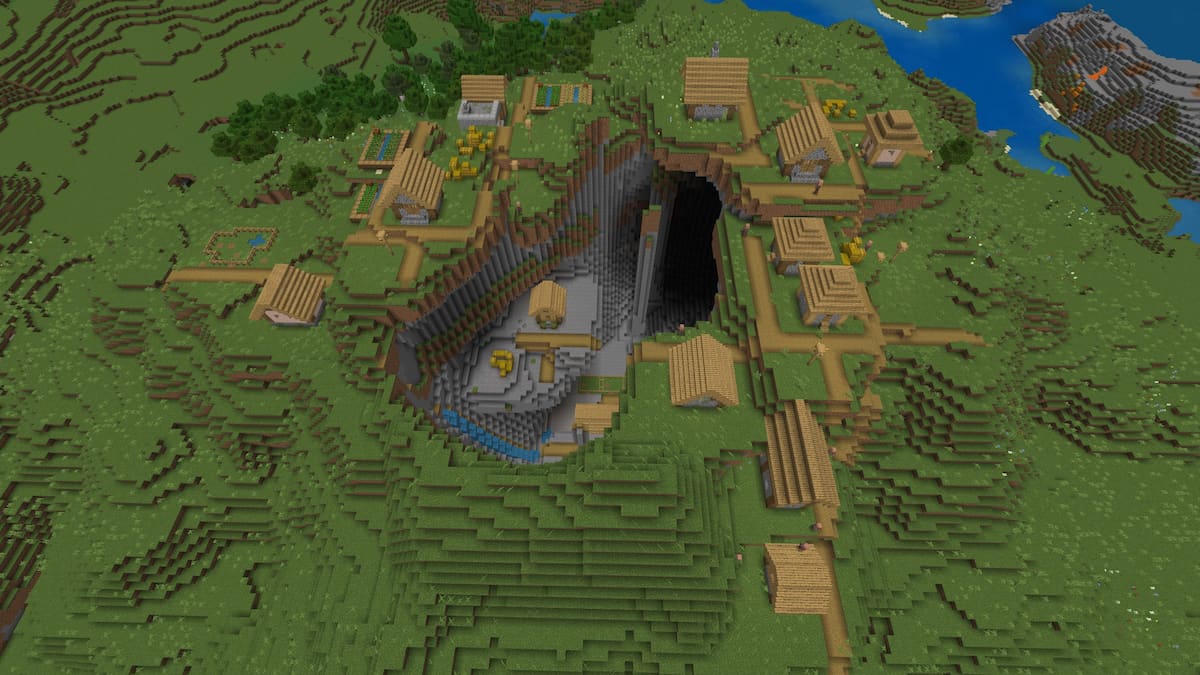
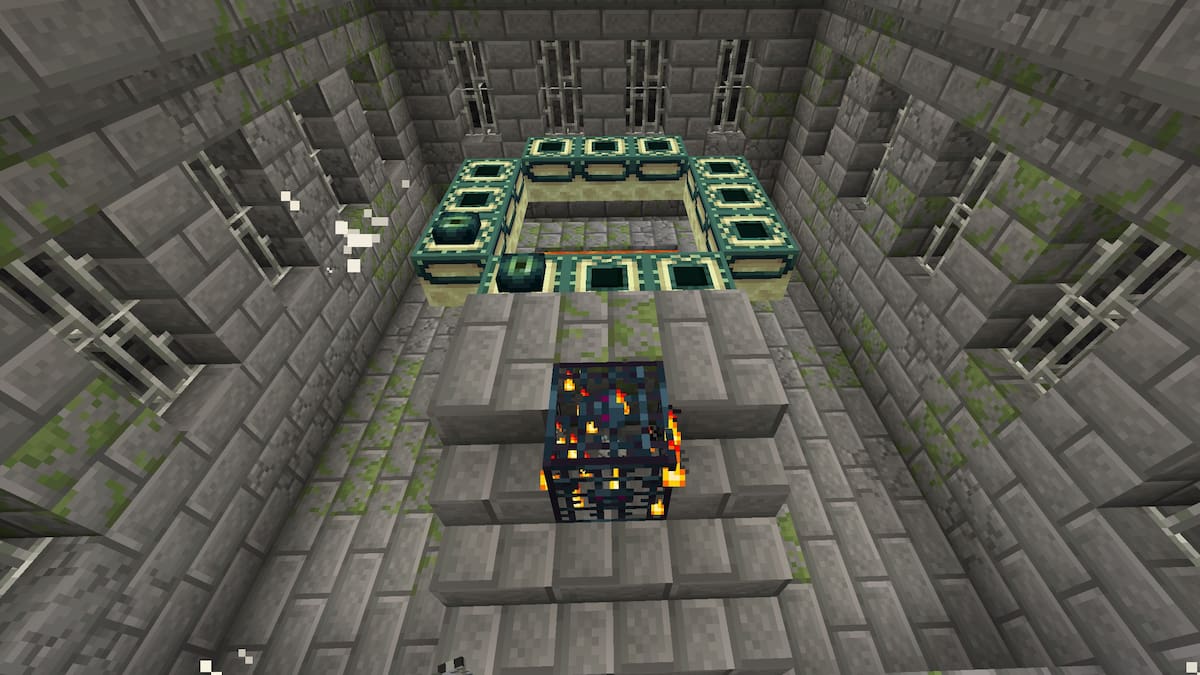
Published: Nov 12, 2018 09:23 pm